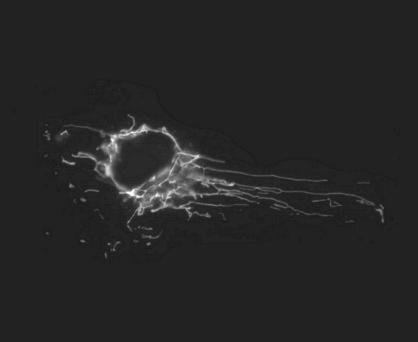Mitochondria is an important organelle that has its own DNA. In humans, after fertilization the paternal DNA goes inside the oocyte cytoplasm but it is not inherited by the offspring. The mitochondrial DNA has high expression levels. It also has importance in ancestral inheritance.

The mitochondrial genome of humans is 16,569 bps. Genes for 22 tRNA, 16 SrRNA, ATPase subunit 6,cytochrome b and eight other coding genes have been discovered. It is a circular double stranded DNA. Mitochondria is an important organelle that has its own DNA. In humans, after fertilization the paternal DNA goes inside the oocyte cytoplasm but it is not inherited by the offspring. The paternal mtDNA is degraded by the molecular mechanisms like ubiquitin-proteasome and nuclear dependent systems due to which only the maternal mtDNA is transferred to offspring.
Mitochondrial diseases
This include diseases like cancer and aging. The entire mitochondrial genome of any eukaryotic specie can be sequenced and assembled with the help of Next-generation sequencing(NGS). This sequencing is also known as high – throughput sequencing, which has evolved the following types of sequencing, Roche 454 sequencing, Illumina sequencing, PGM sequencing and SOLiD sequencing. These technologies are more cheaper and quick than the Sanger sequencing and help in aligning data in the study of genomics.
The first disease causing mutation in the mitochondrial DNA was observed in 1998. Evident advances in the field of mitochondrial genomics has improved the understanding of mitochondrial DNA mutations. Mutations in mtDNA causes rare diseases which are difficult to treat. Genomic sequencing technologies and bioinformatics have enabled to study the genetic etiology and thus have developed mitochondrial DNA databases such as Mitocarta 2.0, MITOMAP, MSeqDR mitochondrial disease data resource. These databases help in mtDNA sequences interpreting diseased mitochondrial genes.
High expression levels and copy number of mitochondrial DNA has led to the Next generation sequencing these mtDNA have more number of adenine and thymine bases in their transcripts which contribute to the mtDNA associated diseases. Almost 5,300 mtDNA have been submitted to GeneBank.
The mitochondrial genes can be used as genetic markers. Researches related to microbial mitochondria is aided by meta genomics which has led to the creation of new computational algorithms known as MITObim. This facilitates in assembling the mixed mtDNA sequencing samples. Mutations in mitochondrial DNA has resulted in heterogeneous pools. Quantification of these mutations require tools like MitoRS a sensitive and high throughput sequencing to detect hetroplasmy. 1158 genes which encode for human and mouse protein thus create this inventory as a support to mitochondrial localization. This inventory was published in the Cell in 2008, thus Mitocarta was launched in 2015 and thus it was generated with the help of techniques such as microscopy, GFP tagging, along with genome datasets mitochondria localization.
MITOMAP is a human mtDNA database in which polymorphism as well as mutations are added. In 2018 new 125 variants were added which changed the data involving 13,656 variants, 46,092 full length sequences and 70,175 control regions. This data base also supports a noted human mtDNA. Mitochondrial Disease Sequence Data Resource (MSeqDR is a global resource base which involves curation, annotation of genomic data related to mitochondria diseases. MITOzoa (metazoa mitochondrial database) and mtDB are also mtDNA databases. Initiatives have been taken to understudy genomic diversity of protests and microbes.
Transcriptomes of hundreds of marine protists have been annotated in a marine microbial eukaryotic transcriptome sequencing project. These organisms have an active transcription process. This means that the RNA – sequence tool is used to read post transcription process in various mitochondria.
Conclusion
The mitochondrial DNA has high expression levels. It also has importance in ancestral inheritance. Mitochondria is an organelles which is present in microbes,metazoa,humans, animals and plants. Other than nucleus, mitochondria is another organelle which has integrated DNA which is passed on from generation to generation. It is a contained information. Any mutations in this mtDNA can lead to genetic diseases. Thus these mutations need to be integrated into quick access databases to enhance the availability of data, giving it an easy access. NGS technique has made sequencing of the mitochondrial genome easy. This field is excessively vast and creative. The most important part of this field is the sequencing and annotation of mtDNA in a correct manner and admitting it to the gene bank. The sequencing of mtDNA involves microbes as well as protists.
The authors is from Kinnaird College for Women, Lahore, Pakistan.